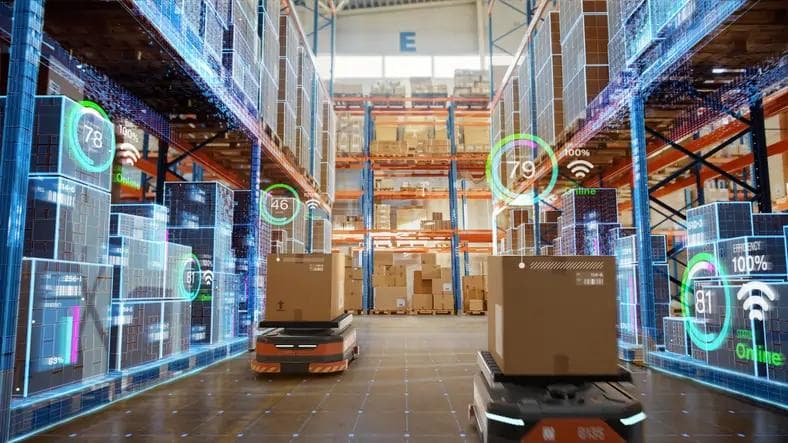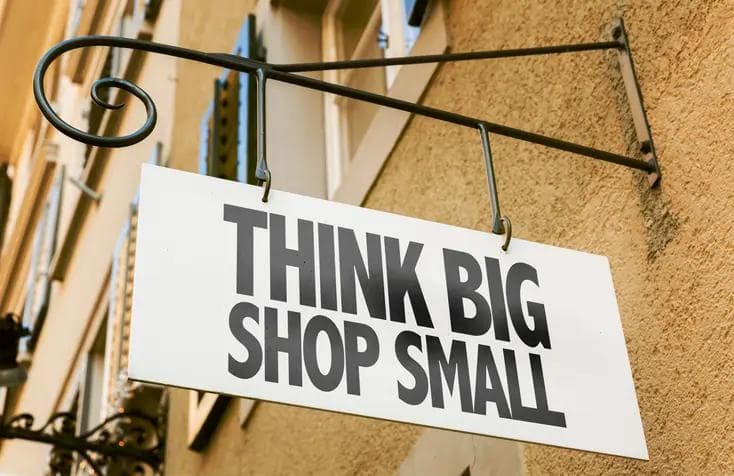8 Trends Shaping the Next Chapter of Retail Digital Commerce
8 Trends Shaping the Next Chapter of Retail Digital Commerce
Published by Jessica Weisman-Pitts
Posted on October 7, 2022

Published by Jessica Weisman-Pitts
Posted on October 7, 2022

From the rise of the marketplace model to the comeback of secondhand apparel, here are the 8 key trends to look out for in digital commerce over the coming year.
By Khalid Khan, Head of Sales & Marketing UK, VTEX
Digital commerce technology has come a long way since Amazon first started selling books online back in the mid-90s. Competition in online retail has intensified dramatically, especially over the past two years, as the pandemic drove consumers to websites when brick-and-mortar stores closed. As a result, online retailers are facing fresh challenges to stand out and remain relevant.
In such a competitive environment, where margins are constantly under pressure, keeping up with industry trends is more important than ever. Consumer expectations adjust quickly as they adapt to what’s in vogue, with trends becoming industry mainstays in a matter of months. If consumers don’t see your business keeping up – with the desired level of choice easily at their disposal – they’ll quickly click away and shop elsewhere.
To help you make sense of what’s happening right now, here are 8 online retail trends shaping the industry now and in the months ahead.
According to the annual 2022 Future of Marketplaces report from Edge by Ascential, by 2027 third-party sales through marketplaces will be the largest and fastest-growing retail channel globally, accounting for 38% of all global retail sales growth.
With the popularity of giant marketplaces like Amazon and Alibaba, consumers have become accustomed to a wider range of choices as well as to the ability to compare brands and prices all in one place.
A marketplace model offers benefits for the retailer, including the ability to increase revenue without increasing expenses by partnering with third-party sellers. They can also overcome issues with their fulfilment systems, such as an inability to access their full inventory.
Be prepared for more retailers to implement marketplace models in the coming months and years.
As attitudes shift, consumers are going green by choosing merchants, materials, packaging and delivery options that are more sustainable.
In some ways, this is also slow fashion, with consumers focusing on the environmental impact of their clothing choices to focus on longevity rather than disposability. Against many expectations, customers are also increasingly demonstrating a commitment to sustainable shipping, even if that means waiting a bit longer for their orders to arrive.
One useful way that ecommerce providers can play their part is by using an order management system that lets you ship from the closest possible location to reduce the carbon footprint of fulfilment.
As part of the current push on sustainability, businesses are moving from linear commerce to circular commerce. Some believe the circular economy “is the biggest wave of business transformation that companies are embarking on since the industrial revolution.” Circular can mean renting, buying used items or buying products made with recycled materials.
We are seeing more and more examples of circular commerce. For example, IKEA’s retail property company Ingka Centres has launched a new rental platform ‘Library of Things’ at its new Hammersmith shopping development in London which allows people to rent out items like drills, sound systems and sewing machines.
Simple steps by retailers to help customers live a more sustainable life will become mainstay in the coming years – something which ecommerce platforms should be looking to incorporate into their proposition.
The increasing interest in sustainability is encouraging consumers to look at both buying and selling used clothes online, making secondhand apparel a burgeoning segment of the industry.
According to ThredUp’s 2021 Resale Report, 42% of retailers say used clothing will be an important part of their business and almost 24,000 would like to sell used clothing. Watch for more used-clothing retail in the years ahead.
Interestingly, the ThredUp report also states that most retailers would prefer to partner with a used-clothing vendor rather than start from scratch – making the marketplace model an ideal way to add secondhand apparel as a product offering. As such, looking for an ecommerce platform that makes the marketplace model easy to implement is of paramount importance.
When retailers had to quickly adapt to online shopping, home delivery and curbside pickup in
2020, many discovered costly limitations with their fulfilment systems, such as an inability to access their entire inventory especially across multiple fulfilment locations. Moving forward, online retailers are implementing order management capabilities that improve their ability to fill orders in a timely and accurate way.
Having a capable order management system can help retailers with inventory availability and fulfilment, as well as the ability to add or swap suppliers as needed. To ensure your efforts set your retail business up for success, keep these best practices in retail inventory management on your radar.
The pandemic proved humans crave interactions with other humans. Online shopping only fulfilled the need to shop, not to interact. That’s where conversational commerce comes in, with positive results.
The demand for technology within the customer service blend is clear, with a forthcoming report by the Institute of Customer Service in the UK claiming that 82% of customers regularly use digital channels to contact an organisation.
A recent example of this can be found in Tramontina Brazil, which implemented a solution for chat as well as direct communication with sales associates at brick-and-mortar stores. The retailer saw its ecommerce conversion rate increase by 20% as a result.
In the next year, we will see more retailers implement chatbots or messaging apps that let consumers “chat” with a real person in real time.
Buy now, pay later (BNPL) apps are quickly growing in popularity. Companies such as Klarna, Afterpay and Affirm allow customers to make purchases online but pay for them over time in weekly, bi-weekly or monthly instalments. And even BNPL has a sustainability angle: younger customers are using it to buy fewer yet higher-quality (and therefore more expensive) items.
Retailers are embracing this trend because it offers so many benefits, from higher rates of spending by customers to lower cart abandonment rates. In addition, the retailers don’t need an in-house solution. They can partner with an ecommerce platform-provider that has a BNPL integration, ready to be switched on with a few clicks.
However, BNPL firms have come under pressure from watchdogs over contract terms and conditions more recently, so it is advisable to tread carefully and ensure responsible implementation.
Despite the pandemic, shopping is still a leisure activity for many consumers, although now much of it is done online. The challenge is, online shopping can’t compare to in person shopping at a brick-and-mortar store with a real salesperson to help and real products to touch and feel.
Live shopping is the answer to that. As well as TikTok, platforms including Amazon, YouTube, Facebook and Instagram have all been trialling live ecommerce, which brings together entertainment and shopping underpinned by the pulling power of influencers.
Live shopping means salespeople, influencers or experts showcase products in a livestream as customers watch from home. Live shopping has been huge in China for years, but the pandemic has helped to push it in the US and Europe.
The presence of such powerful internet platforms seems set to catalyse the transition, so expect more brands to begin using live shopping for customer engagement and sales.
Although technology can enable rapid change in today’s world, consumer expectations drive that change too. You can future-proof your online retail business by staying on top of trends — because that way you’ll keep up with those consumer expectations too.
As consumers and businesses continue to adapt to new ways of shopping, embracing upcoming digital commerce trends will be a competitive advantage that translates to more sales and consumer trust. With the speed at which change occurs, digital commerce is set to become the new normal. The faster you can adapt, the more competitive you will be.
Explore more articles in the Business category











